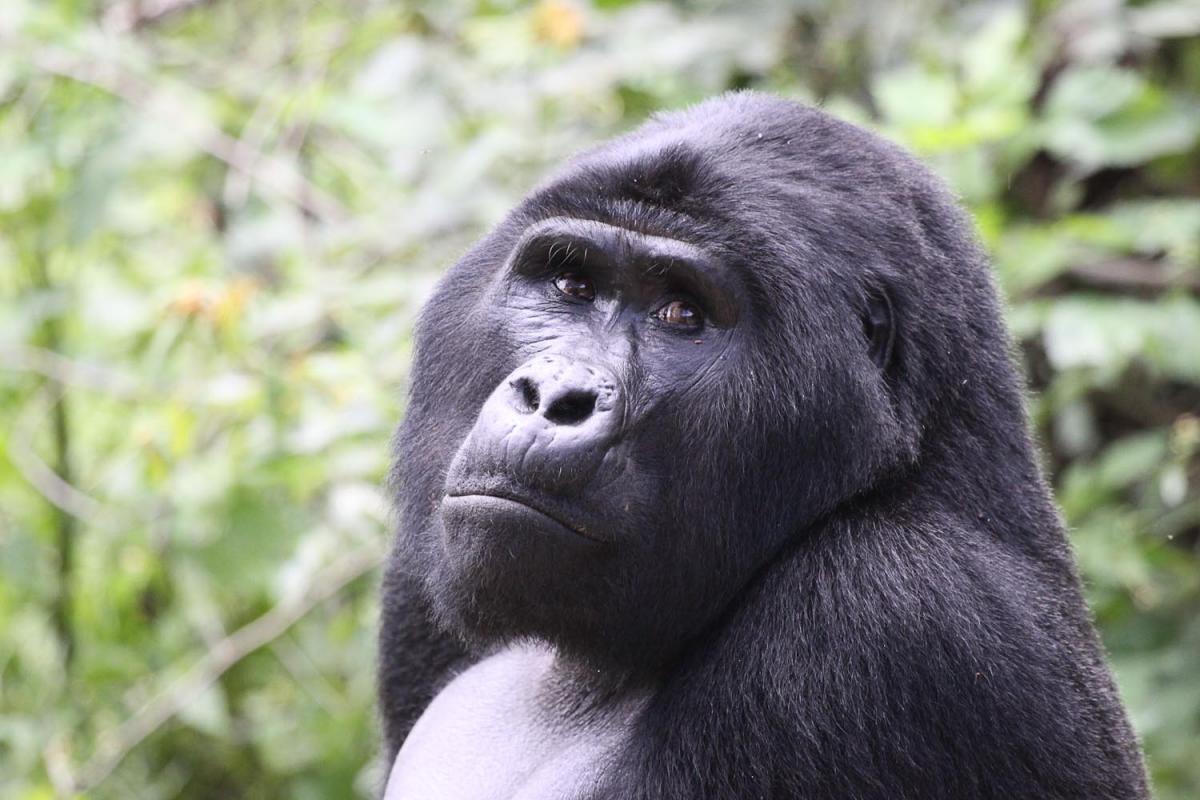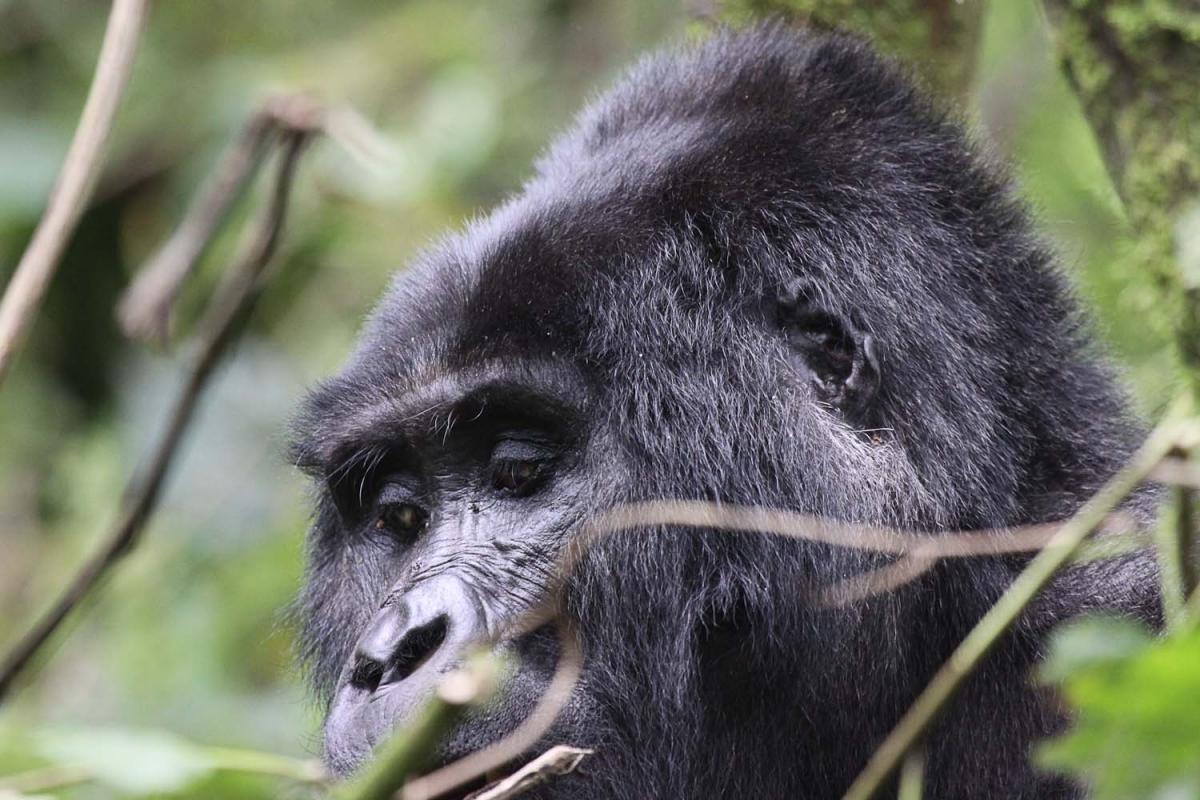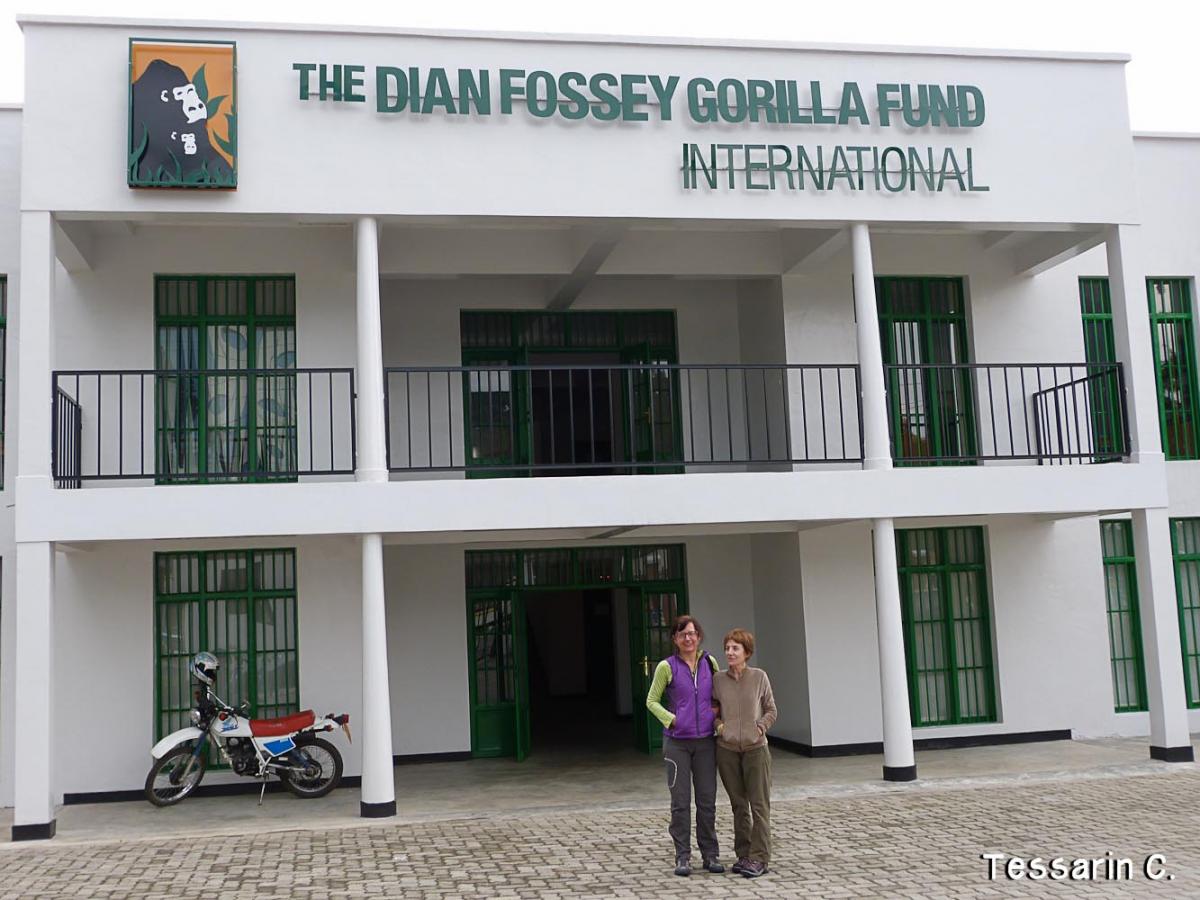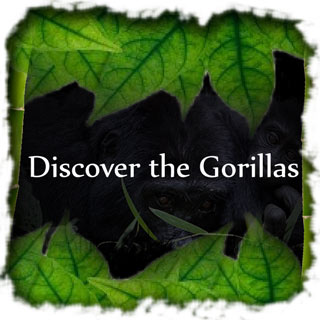Over the past 100 years, mountain gorillas have had a quite history with numerous people and groups working together to ensure their survival in the jungle forests with in Africa. Their history dates back in 1902 when Robert Von Beringe a Germany captain and the first European observed the Mountain Gorillas on the Sabinyo Volcano which were later named Gorilla gorilla Beringei by Matschie in 1903. In 1925, an American naturalist named Carl Akeley convinced his Majesty Albert the king of Belgium to create Albert National Park which is the First National Park in Africa and its boundary was widened in 1929. George Schaller, who is an American zoologist in 1959 under took a basic study of the Mountain Gorillas of Albert National Park.
60's
 After the independence of Belgian Congo (which became Zaire later on) in 1960, the Volcanos National Park was divided into two parts and that the Volcanoes National Park in Rwanda and the Virunga National Park in Congo. In 1967 Dian Fossey who was an American Zoologist began her first long term study on the wild gorillas in Volcanoes National Park and it succeeded where by habituation of the gorillas to human presence began. In 1973, an office in Rwanda called the Rwanda Office of Tourism and National Park Development was created and started giving Rwanda new laws governing the National Parks and hunting of wildlife.
After the independence of Belgian Congo (which became Zaire later on) in 1960, the Volcanos National Park was divided into two parts and that the Volcanoes National Park in Rwanda and the Virunga National Park in Congo. In 1967 Dian Fossey who was an American Zoologist began her first long term study on the wild gorillas in Volcanoes National Park and it succeeded where by habituation of the gorillas to human presence began. In 1973, an office in Rwanda called the Rwanda Office of Tourism and National Park Development was created and started giving Rwanda new laws governing the National Parks and hunting of wildlife.
70's
 During the decade 1970-1980 the history of the mountain gorillas is about how to reduce poaching, how to control the spread of traps and wire snares, and so how to protect the gorillas. Especially the killing in Volcanoes National Park of silverback Digit in 1978 and other five gorillas within a short period marked the worst moment ever and that helped to raise an international concern about the survival of gorillas. The tomb of Digit is still visited at the Old Karisoke Centre near the tomb of Dian Fossey.
During the decade 1970-1980 the history of the mountain gorillas is about how to reduce poaching, how to control the spread of traps and wire snares, and so how to protect the gorillas. Especially the killing in Volcanoes National Park of silverback Digit in 1978 and other five gorillas within a short period marked the worst moment ever and that helped to raise an international concern about the survival of gorillas. The tomb of Digit is still visited at the Old Karisoke Centre near the tomb of Dian Fossey.
The first attempt to link gorilla conservation and tourism took place in Kahuzi Biega National Park in 1973. The park was first gazetted in 1970 and in 1975 was further expanded to up to 6000 square kilometers. In 1973 the first gorilla trekking was introduced, but later on were suspended as there was not enough studies and experience over the implications of humans – gorillas contacts and the “gorilla rules” were not yet clear.
The Mountain Gorilla Project in 1979 was a turning point in the history of gorilla conservation. It follows a convention between Rwanda Government and a consortium formed by private several organizations who are interested in Nature conservation such as the AWLF (African Wildlife Leadership Foundation, today African Wildlife Foundation), WWF, and FFPS (Fauna and Flora Preservation Society). The idea was to introduce gorilla tourism and education on top of anti-poaching efforts as a vehicle to achieve better gorilla conservation. The ability to generate tourism-based jobs and revenues would turn local and national politics attitudes in favor of gorillas.
Two groups of gorillas near Karisoke (Group 11 and 13) were selected to introduce an exercise of “habituation” so that they could be opened to tourist activities. Other families were not considered for the bad temper of some gorillas in regards to humans or for their distance from the starting point of the trekking. Particularly Group 11 had a very calm silverback, called Stilgar, and at the time four infants. The first experimental trekking started in October 1979 with some residents from Kigali. The first non residents’ tourists to visit the gorillas were the Europeans from TransAfrica overlanders in November 1979.
The first trekking were limited to a number of six people per family and even the time spent in contact with gorillas was limited to one hour as to prologue the visit would turn the attitude of the silverback against humans. The payment for the visit was 20 USD per trekking. Especially, this “gorilla trekking” paved the foundations for the so called “gorilla rules”, in other words what humans should do or not to do when encountering the gorillas in their habitat; and this comes as a reflection of the reactions of the gorillas themselves to human visits.
The flow of visitors to Volcanoes National Park soon contributed to the improvement in the accommodation in Ruhengeri; secondly, more jobs as patrolling guards and trekking guides of the National Park were created.
80's
 In 1985, on December 27th Dian Fossey was killed in her cabin at Karisoke Research Center and her death still remains a mystery. She was buried at Karisoke in a cemetery she created for the gorillas, next her beloved Digit. After her death, the census of the population of mountain gorillas in 1989 began and it was found that there were approximately 324 Gorillas in the Virunga Conservation Area and 320 in Bwindi Impenetrable Forest for a total of 644.
In 1985, on December 27th Dian Fossey was killed in her cabin at Karisoke Research Center and her death still remains a mystery. She was buried at Karisoke in a cemetery she created for the gorillas, next her beloved Digit. After her death, the census of the population of mountain gorillas in 1989 began and it was found that there were approximately 324 Gorillas in the Virunga Conservation Area and 320 in Bwindi Impenetrable Forest for a total of 644.
90's
In 1992 the male silverback gorilla called Mrithi of “Group 13” (one of the habituated families) was killed victim of poaching. In 1994 the civil war in Rwanda broke out and as a result almost 18 to 22 mountain gorillas were killed during the fight. There is another sad part of the history of the Rwandan genocide of 1994: the genocide of the gorillas and the end of gorilla tourism.
Only in 1999, Volcanoes National Park was re-opened for tourism by the Rwandan Office of Tourism and National Parks (ORTPN). The price for gorilla trekking was 250 USD, later on increased to 360 USD and in 2006 / 2007 further increased to 500 USD.
00's
On October 17th 2002, Mountain Gorillas Conservation Fund hosted the 100th anniversary of identification discovery of the mountain gorillas in Rwanda and in 2004 Keesling won a lifetime achievement award from British Airways for worldwide conservation efforts for gorilla protection.
In 2012 Rwanda Volcanoes National Park count nine gorilla families open for gorilla tourism and from 1st of June the price of the gorilla permit is 750 USD. Definitely, this big revenue from gorilla tourism is something that only a decade back was not even expected. Moreover, there is much more potential from the investment from gorilla tourism back to conservation of the gorillas.
The history of gorilla tourism starts in Uganda when in 1991 the government gazetted Bwindi National Park under the Uganda Wildlife Authority. Uganda experienced a terrible delay in tourism development as during the Seventieth tourism was prohibited and national parks considered hunting areas by the Dictator Idi Amin and no conservation was even possible at all. During the Eightieth the country was in civil war until 1986 when finally the National Resistance Army won the battle for the power in Kampala. After few years for restoration of the rule of law and the reconstructions of the public institutions of the state, Uganda in the beginning of the Ninetieth was ready to cover the gap with other countries where gorillas are found.
The first action carried out in Uganda was the habituation of the Mubare family, where the silverback Ruhondeza proved to be of good character interacting with humans therefore paving the way forward for gorilla tourism. Mubare family was first open for gorilla tourism in 1993.
In 2004 there were already four gorilla families open to tourism in Uganda with Mubare, Rushagura, Habinianja and Nkuringo which was open on that same year. Gorilla permits coasted 360 USD.
In 2012 Bwindi National Park counts now nine gorilla families habituated with the opening of two new trekking points in Ruhija (Central area of Bwindi) and Rushaga (South-Eastern part of Bwindi). Gorilla permits in Uganda are sold at 500 USD.

